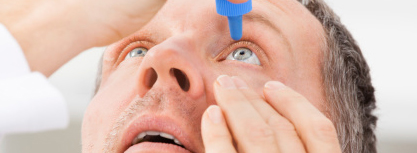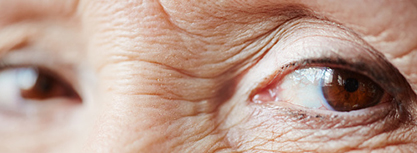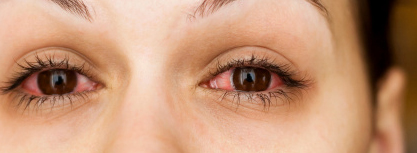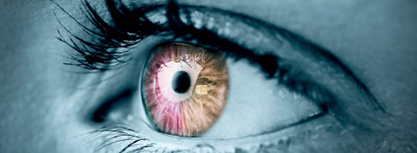As therapeutic optometrists, Today’s Vision doctors undergo eight years of higher education to earn their Doctor of Optometry degrees and are licensed by the Texas Optometry Board. Optometrists work with other health professionals in diagnosing diabetes, glaucoma, macular degeneration, high blood pressure and a host of systemic diseases. Below are many of the major eye conditions, some of which if untreated can lead to major vision.

Amblyopia
Amblyopia – also called “lazy eye” – affects four million people in the United States. Usually, it begins in early childhood and occurs when one eye is used less than the other; if one eye is crossed or turns out, or the individual sees double so that he or she learns to shut off or ignore one eye for sight. Having one eye that is nearsighted, the other farsighted may also cause this condition. For small children, wearing an eye patch for several days can help correct. More extended vision therapy – usually several hours a week in the doctor’s office and/or at home – may be needed. If not corrected in early childhood, treatment of older children and adults has still shown improvement in vision.

Computer Vision Syndrome (CVS)
Computer Vision Syndrome affects three in four computer users. CVS can appear as a variety of symptoms: headaches; eye strain; neck and back aches; sensitivity to light; blurred vision; double vision, and dry or irritated eyes. Whether your condition requires special eyeglasses for viewing your computer video display terminal or other treatment will depend on the clinical findings of your Today’s Vision doctor. Be aware that children are particularly susceptible to CVS because of their physical size, adaptability and lack of eye self-awareness.

Detached Retinas
The retina is the light-sensitive tissue of the back of the eye that sends images to the brain. A Detached Retina occurs when the retina detaches from its normal position against the back of the eye where blood vessels furnish it with oxygen and nutrients. It may be caused by eye injury; the aging process, tumors, cataract surgery, eye disease or extreme nearsightedness. A serious eye condition, an untreated retinal detachment almost always causes permanent vision loss in the affected eye. Early symptoms may include light flashes in one eye; floaters; a dark shadow over part of the field of vision; blurred vision or blind spots, or watery vision. Because of the seriousness of this condition, do not hesitate to go to an emergency room or contact your Today’s Vision doctor.

Dry Eye
If you have Dry Eye, symptoms may include irritated, scratchy, dry, uncomfortable or red eyes; a burning sensation; excessive tearing; blurred vision, or a feeling of something foreign in your eyes. If untreated, excessive dry eyes can damage eye tissue, scar your cornea (the front covering of the eye), impair vision and make wearing contact lenses difficult. Dry eye occurs because your eye does not produce enough tears or produce tears that do not have the proper chemical composition. Common causes include blinking or eyelid problems; medications like antihistamines, oral contraceptives and antidepressants; a dry climate; wind and dust; general health problems like arthritis, and chemical or thermal burns. Twenty-five percent of Americans have dry eye or dry eye symptoms. Your Today’s Vision doctor is knowledgeable in treatment options.

Glaucoma
Glaucoma is actually the term for a group of eye diseases that lead to damage of the optic nerve – the bundle of nerve fibers that carry information from the eye to the brain. Optic nerve damage usually occurs in the presence of high intraocular pressure (but not necessarily). Glaucoma can lead to vision loss or possibly blindness, and is the leading cause of blindness among African Americans and Hispanics in the United States. The two main forms of glaucoma are open-angle (which affects 95% of the population) and closed-angle. Open-angle has no symptoms at first; closed-angle results from a sudden, complete blocking of the fluid flowing out of the eye. Early treatment may decrease your chance of eye damage and loss of vision. Your Today’s Vision doctor can diagnose glaucoma through various tests and the use of sophisticated equipment. A treatment and monitoring plan can then be made for you.

Ocular Allergies
Ocular allergies are often accompanied by allergic rhinitis (nasal symptoms) because the eyes and nose are closely connected by the tear ducts. When first exposed to allergens, the response in the eye is nearly immediate, and can include itching; redness of the eyes, and swelling of the eyes and eyelids. Your Today’s Vision doctor can provide treatment options for this irritating condition.

Cataracts
A Cataract is the clouding of the lens of the eye due to aging that causes distorted or blurred vision, glare, difficulty seeing in poor lighting and other vision issues. More than 20 million Americans 40 or older have early cataracts. Fifty percent of persons over 65 have significant cataracts. Outpatient cataract surgery is the most common operation in the world – and involves removing the aged lens and replacing with a new intraocular one – either a single-vision or an FDA-approved multi-focal that allows one to see near, intermediate and far without glasses or contacts (see Vision Correction section for more details).

Conjunctivitis
Conjunctivitis – also called “pink eye” – is an infection or inflammation of the conjunctiva – the thin, protective membrane that covers the surface of the eyeball and inner surface of the eyelids. There are four types of conjunctivitis – bacterial, viral, allergic and chemical. Typically, conjunctivitis improves within two weeks (see your Today’s Vision doctor for specific diagnosis and treatment). However, some types can develop into serious corneal inflammation and vision loss if not treated.

Diabetic Retinopathy
The most prevalent diabetic eye problem, Diabetic Retinopathy is the leading cause of blindness in American adults because it damages the blood vessels in the retina. The good news is retinal damage happens slowly and can be monitored by your Today’s Vision doctor. In the early disease stage, blurred vision or temporary blindness occurs when the blood vessels weaken, bulge and leak fluid (a condition called macular edema). As the disease progresses, the retina can detach from the eye causing blindness.

Floaters & Flashes
You may see small specs or clouds moving in your field of vision. These are called floaters. You can often see them while looking at a plain background like a blank wall or blue sky. Floaters are actually tiny clumps of cells or material inside the vitreous, the clear gel-like fluid that fills the inside of your eye. When people reach middle age, the vitreous gel may start to shrink, forming clumps or strands inside the eye. When the vitreous gel pulls on the retina, you may see what look like flashing lights or lightening streaks. These are called flashes. The appearance of floaters and flashes may be alarming, especially if they develop very suddenly. They may be an indication that a retinal tear or detachment is occurring. You should contact your Today’s Vision doctor when you see floaters for the first time; you notice an increase in the number or size of the floaters, or you experience the sudden onset of flashes. In many cases, no serious problems are found, but a complete eye exam is important. If there is damage to the retina, immediate diagnosis and treatment are important to prevent vision loss.

Low Vision
“Low Vision” is impaired vision that cannot be fully restored by surgery, medical treatments or conventional eyeglasses or contact lenses. It is not blindness, but more than 15 million Americans have some type of visual impairment. When an individual’s eyesight cannot be corrected to better than 20/200 with lenses, one is considered to have low vision. Macular degeneration, diabetic retinopathy and genetic diseases are some of the causes of low vision. While a cure is not possible, your Today’s Vision doctor can utilize bioptic telescopes and microscopes mounted on your glasses, among other options, to help enhance your low vision.

Macular Degeneration
Age-related macular degeneration (AMD) is a medical condition which usually affects older adults and results in a loss of viision in the center of the visual field (the macula) because of damage to the retina. It occurs in “dry” and “wet” forms. It is a major cause of blindness and visual impairment in older aduts (>50 years.) Macular degeneration can make it difficult or impossible to read or recognize faces, although enough peripheral vision remains to allow other activities of daily life. In the dry (nonexudative) form, cellular debris called drusen accumulates between the retina and the choroid, and the retina can become detached. In the wet (exudative) form, which is more severe, blood vessels grow up from the choroid behind the retina, and the retina can become detached. It can be treated with laser coagulation, and with medication that stops and sometimes reverses the growth of blood vessels.

